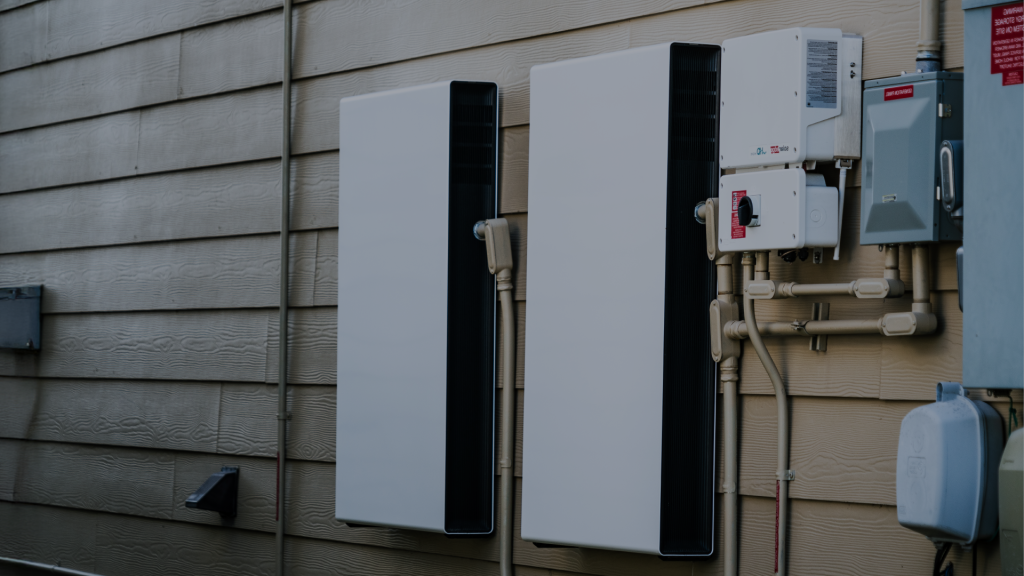As solar batteries grow increasingly efficient, and energy prices continue to rise, understanding the financial returns on your solar battery could help you better maximise the value of your investment.
Of course, there’s quite a few factors which go into calculating your battery payback period, so that’s what we’re discussing today. Let’s look at what solar batteries cost, how to minimise those costs and ways to maximise your return on investment.
What do solar batteries typically cost in Australia?
At face value, solar batteries (including installation) typically cost anywhere from $10,000 to $16,000 to install, depending on your choice of battery, whether or not you need a solar inverter, and the complexity of the installation.
But, government rebates and financing from private companies can reduce those up-front costs. For example, the NSW battery rebate could get you up to $2,400 in discounts, Solar Victoria provides a rebate of up to $1,400 for the installation of solar panel (PV) systems, and plans like the federal government’s STC scheme could net you even more. Plus, interest-free loans, $0 down payments and monthly payment plans from private financing companies can further reduce that initial investment.
Learn more: What to look for when buying a solar battery
What is the payback period of a solar battery?
The current solar battery payback period in Australia sits anywhere from five to 10 years – depending on where you are in the country, your battery’s capacity, household usage habits and your energy billing situation.
This means, in typical cases, a battery will often pay itself back within its warranty period.
According to SolarQuotes, the average payback period across Australian states is:
| State | Estimated Payback Period* |
| ACT | 8.9 years |
| NSW | 5.8 years |
| NT | 13.5 years |
| QLD | 8.3 years |
| SA | 4.6 years |
| TAS | 10.3 years |
| VIC | 9 years |
| WA | 6.1 years |
*Assuming a 10 kWh battery which cost $10,000 to install, 100% battery utilisation every day, and time-of-use energy tariffs.
Factors which can impact your payback period
We mentioned earlier there are a few factors which can impact the likely payback period of your battery. Basically, the more you spend up-front and the less you use the battery, the slower the payback period will often be. Of course, the opposite is also true.
So what should you be thinking about? Here are some common factors:
1. Up-front discounts
When it comes to installing rooftop solar and battery storage at your home or business, it almost always pays to check what incentive schemes and rebates are available in your area. Accessing these discounts can take thousands of dollars off the up-front cost of your system, but you have to move fast – they don’t last forever.
Not sure what’s available in your area? Give us a call and we’ll walk you through it.
2. The size of your battery
It’s critical that you find the right-sized battery for your household. This is because purchasing a battery which is too small for your daily use could mean you discharge it too fast and must switch back to the grid during peak billing periods (like evenings or mornings).
Alternatively, if you get a battery which is too big then you may be stuck paying it off for longer without using it to its full capacity. That means higher up-front costs, but fewer benefits.
A ‘Goldilocks’ battery should meet your regular household needs every day, allowing you to switch to battery during peak times and then charge it off your solar panels during the day when you’re not using it as much.
Learn more: Solar battery sizing guide: What size battery do you need?
3. Household usage habits
A rooftop solar and battery storage system gives you the freedom to move your solar power use to the most cost-effective times of day.
Most electricity retailers charge based on demand, with peak demand leading to peak tariffs (called time-of-use tariffs). The alternative is flat-rate billing, where the tariff doesn’t change.
If you’re on a time-of-use tariff, you can use your battery during higher-cost periods, avoiding the biggest charges, and then draw from the grid when it’s cheaper.
Additionally, if you utilise 100% of your battery each day and recharge from solar when the sun is shining, you’ll help to maximise your investment (and savings) in that battery.
- Question: Can you still save on flat-rate tariffs? Yes, absolutely. Some users find the payback period a little slower on flat-rate billing compared to time-of-use, but the savings still come. Utilising 100% of your battery each day and charging it with solar still allows you to avoid drawing power from the grid for that period, saving as a result.
4. Available feed-in tariffs
Feed-in tariffs (FiTs) are payments or billing discounts made available to solar customers who send excess energy back to the grid.
While you may not be sending quite as much back to your energy retailer if you have a battery (because you’ll be storing it for use later), you may still find that you generate more power during the day than you can store, leading to excess.
FiTs aren’t worth as much as they used to be, but every little bit extra contributes to bringing down that payback period and turning your battery into profit.
5. Increase to home value
A solar system, including battery storage, can increase your home’s value, but this is often overlooked when calculating the buyback period.
Domain research estimated that energy-efficient houses have an average 17.1% higher value compared to houses without energy-efficient systems. In real-dollar terms, that’s about $125,000.
So, for some Australians this would mean their investment return in solar is theoretically instant, because the increase to property value far eclipses the installation costs of the system.
Learn more: Do solar panels increase your property value?
Will joining a VPP improve my battery payback period?
Joining a Virtual Power Plant (VPP) can in many cases decrease your solar battery payback period by increasing your monthly savings.
VPPs are networks of renewable energy generators (like you) who have banded together to share clean energy, move away from the grid and earn discounts on their energy bills. Depending on the VPP provider, you might get a small monthly discount, a bit more each quarter or a larger sum each year. Alternatively, some providers may give you free energy instead of a payment or billing discount.
Learn more: What is a virtual power plant (VPP), and are they worth it?
Get solar battery storage from the experts
Ready to maximise your energy savings with added solar battery storage? We have expert electricians across Australia and can help you with a total solar system installation, retrofit a modern battery into your existing solar system, or add more capacity to your existing storage.
To learn more about what we can do for your property, and to get a quote on installation costs, get in touch with our team today.






